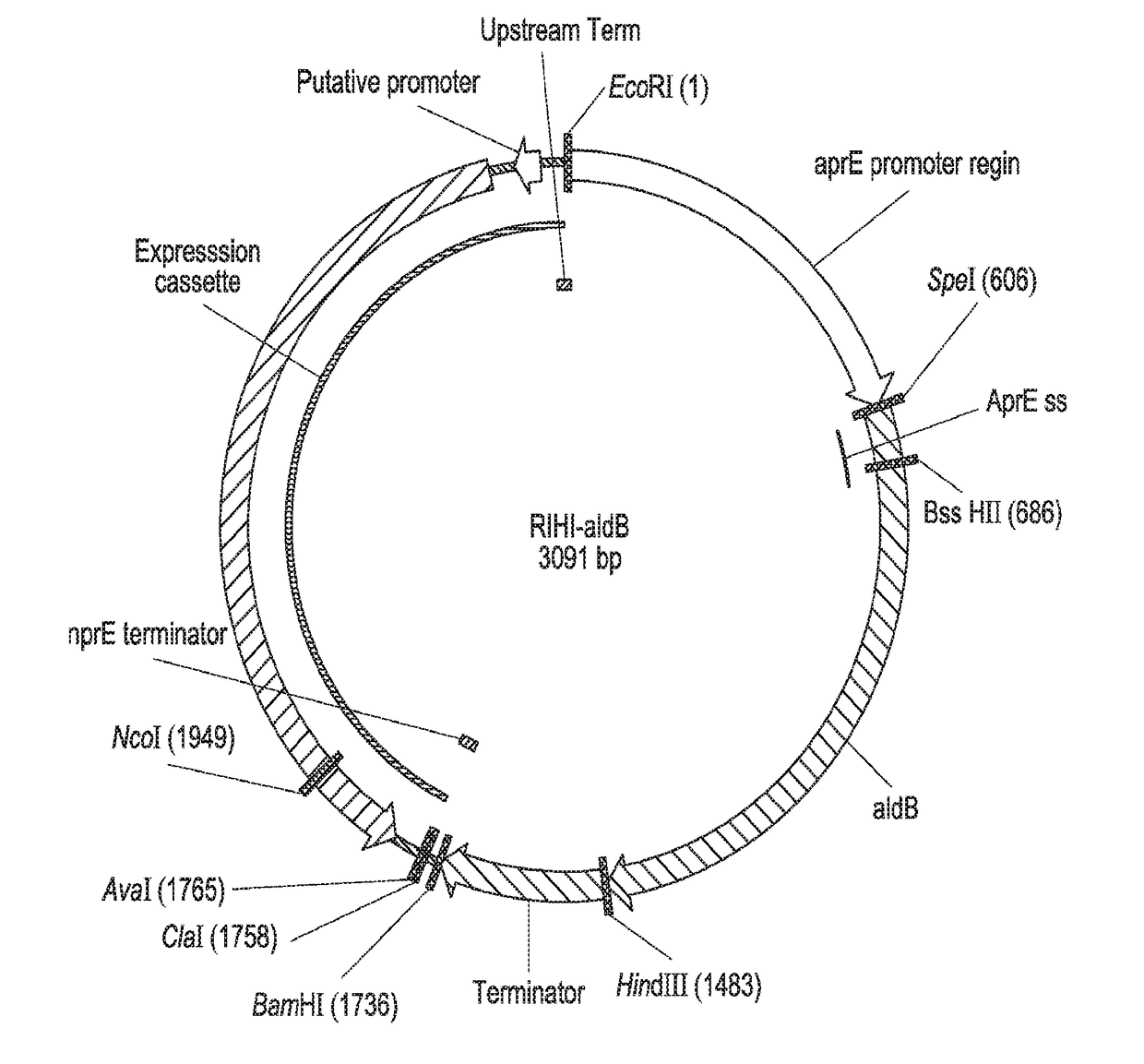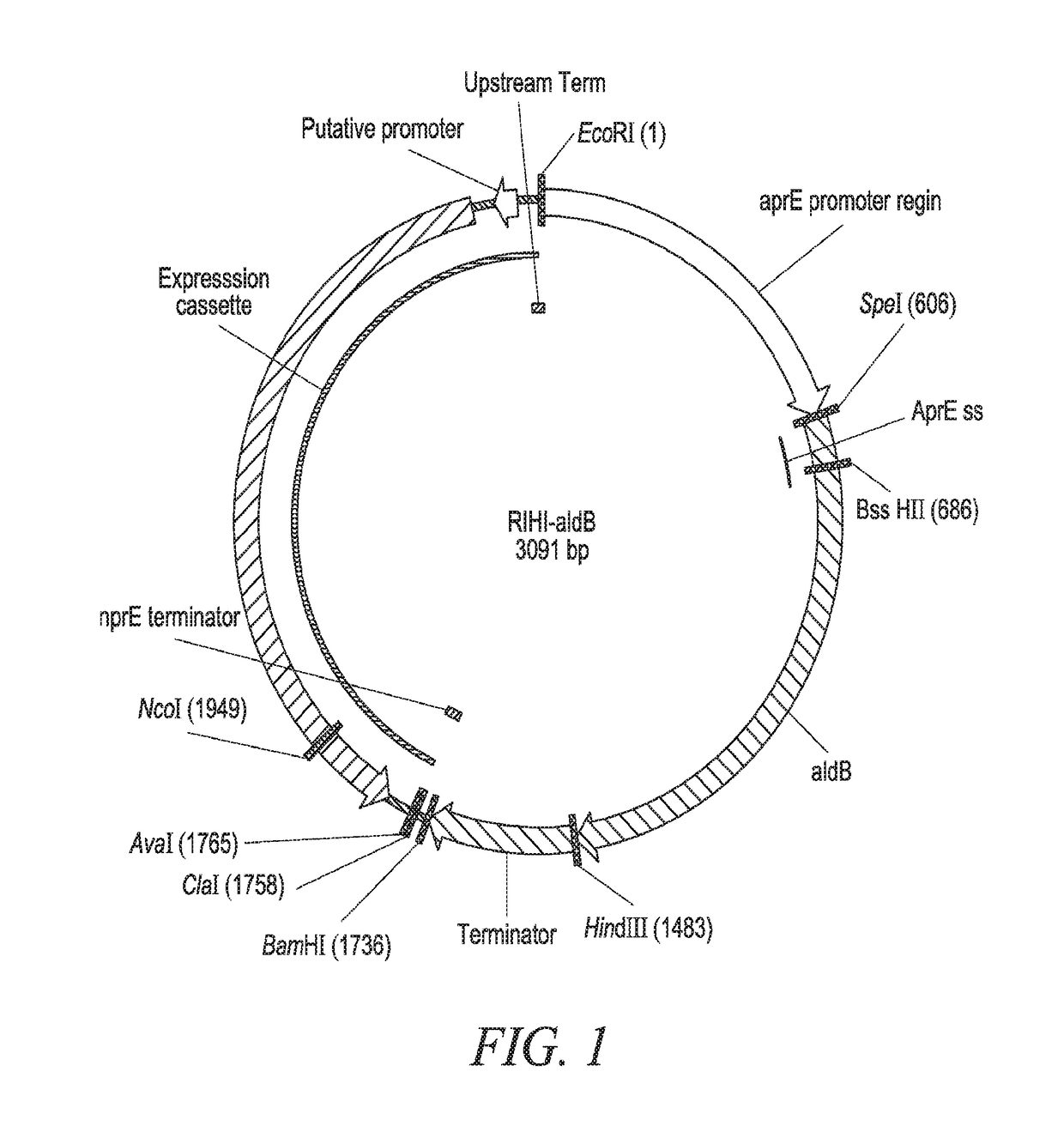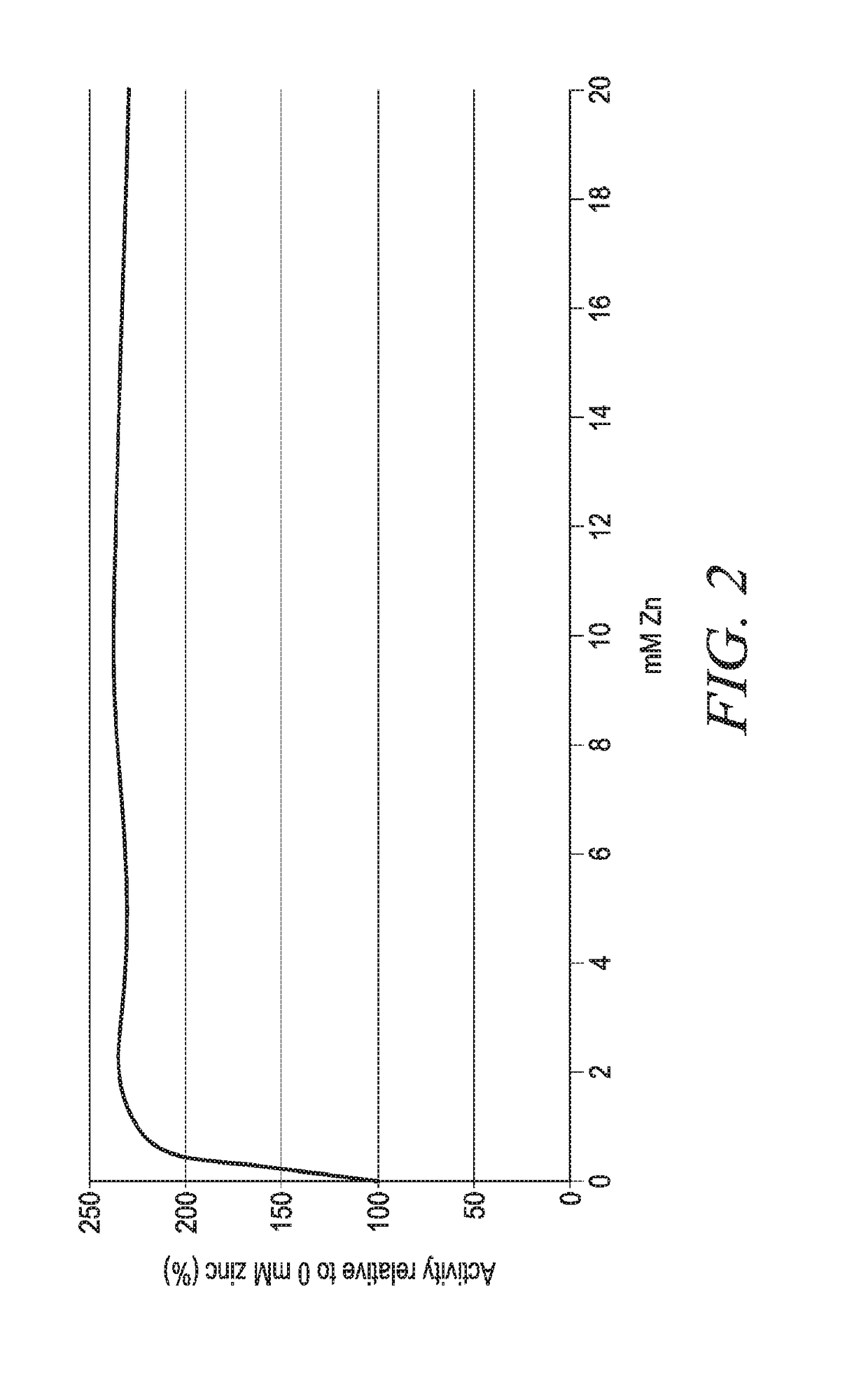Acetolactate decarboxylase
a technology of acetolactate and decarboxylase, which is applied in the direction of lyases, enzyme stabilisation, carbon-carbon lyases, etc., can solve the problems of negative effect on beer flavor and taste, formation of diacetyl, and unstable aldc at fermenting conditions, so as to increase the activity and/or stability of an aldc enzym
- Summary
- Abstract
- Description
- Claims
- Application Information
AI Technical Summary
Benefits of technology
Problems solved by technology
Method used
Image
Examples
example 1
ous Expression of Acetolactate Decarboxylase, aldB
[0183]The Brevibacillus brevis (which may be referred to as Bacillus brevis) acetolactate decarboxylases (ALDC) aldB gene was previously identified (Diderichsen et al., J Bacteriol. (1990) 172(8): 4315), with the sequence set forth as UNIPROT Accession No. P23616.1. The sequence of this gene, aldB, is depicted in SEQ ID NO:1. The nucleotides highlighted in bold and underlined are the nucleotides which encode the signal peptide.
sets forth the nucleotide sequence of the aldBgene:SEQ ID NO: 1gctgtctttgactgcttttgcagctacaacggctactgtaccagcaccacctgccaagcaggaatccaaacctgcggttgccgctaatccggcaccaaaaaatgtactgtttcaatactcaacgatcaatgcactcatgcttggacagtttgaaggggacttgactttgaaagacctgaagctgcgaggcgatatggggcttggtaccatcaatgatctcgatggagagatgattcagatgggtacaaaattctaccagatcgacagcaccggaaaattatcggagctgccagaaagtgtgaaaactccatttgcggttactacacatttcgagccgaaagaaaaaactacattaaccaatgtgcaagattacaatcaattaacaaaaatgcttgaggagaaatttgaaaacaagaacgtcttttatgccgtaaagctgaccggtacctttaa...
example 2
etermination Methods
Protein Determination by Stain Free Imager Criterion
[0192]Protein was quantified by SDS-PAGE gel and densitometry using Gel Doc™ EZ imaging system. Reagents used in the assay: Concentrated (2×) Laemmli Sample Buffer (Bio-Rad, Catalogue #161-0737); 26-well XT 4-12% Bis-Tris Gel (Bio-Rad, Catalogue #345-0125); protein markers “Precision Plus Protein Standards” (Bio-Rad, Catalogue #161-0363); protein standard BSA (Thermo Scientific, Catalogue #23208) and SimplyBlue Safestain (Invitrogen, Catalogue #LC 6060. The assay was carried out as follow: In a 96well-PCR plate 504, diluted enzyme sample were mixed with 50 μL sample buffer containing 2.7 mg DTT. The plate was sealed by Microseal ‘B’ Film from Bio-Rad and was placed into PCR machine to be heated to 70° C. for 10 minutes. After that the chamber was filled by running buffer, gel cassette was set. Then 10 μL of each sample and standard (0.125-1.00 mg / mL BSA) was loaded on the gel and 5 μL of the markers were loaded....
example 3
Assay Method
Spectrophotometric Assay of α-Acetolactate Decarboxylase
[0193]α-Acetolactate decarboxylase (ALDC) catalyses the decarboxylation of α-acetolactate to acetoin. The reaction product acetoin can be quantified colourimetrically. Acetoin mixed with α-naphtol and creatine forms a characteristic red color absorbing at OD522 nm. ALDC activity was calculated based on OD522 nm and an acetoin calibration curve. The assay was carried out as follows: 20 mM acetolactate substrate was prepared by mixing 100 μL ethyl-2-acetoxy-2-methylacetoacetate (Sigma, Catalogue#220396) with 3.6 mL 0.5 M NaOH at 10° C. for 10 min. 20 mL 50 mM MES pH 6.0 was added, pH was adjusted to pH 6.0 and volume adjusted to 25 mL with 50 mM MES pH 6.0. 80 μL 20 mM acetolactate substrate was mixed with 20 μL enzyme sample diluted in 50 mM MES, pH 6.0, 0.6 M NaCl, 0.05% BRIJ 35 and 0.01% BSA. The substrate / enzyme mixture was incubated at 30° C. for 10 min. Then 16 μL substrate / enzyme mixture was transferred to 200 ...
PUM
| Property | Measurement | Unit |
|---|---|---|
| concentration | aaaaa | aaaaa |
| concentration | aaaaa | aaaaa |
| atomic radius | aaaaa | aaaaa |
Abstract
Description
Claims
Application Information
 Login to View More
Login to View More - R&D
- Intellectual Property
- Life Sciences
- Materials
- Tech Scout
- Unparalleled Data Quality
- Higher Quality Content
- 60% Fewer Hallucinations
Browse by: Latest US Patents, China's latest patents, Technical Efficacy Thesaurus, Application Domain, Technology Topic, Popular Technical Reports.
© 2025 PatSnap. All rights reserved.Legal|Privacy policy|Modern Slavery Act Transparency Statement|Sitemap|About US| Contact US: help@patsnap.com



